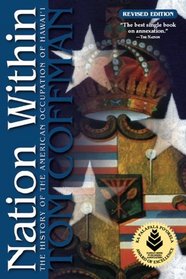Search -
Nation Within: The History of the American Occupation of Hawaii
Nation Within The History of the American Occupation of Hawaii
Author:
The question, "How did the distant island kingdom of Hawaii become part of the United States?" has been buried by a combination of American mythology and American denial. But that question has taken on new urgency in context of Native Hawaiian demands for a restoration of self-government. The takeover of this independent nation of long standing ... more »
Author:
The question, "How did the distant island kingdom of Hawaii become part of the United States?" has been buried by a combination of American mythology and American denial. But that question has taken on new urgency in context of Native Hawaiian demands for a restoration of self-government. The takeover of this independent nation of long standing ... more »
ISBN-13: 9780982165607
ISBN-10: 0982165609
Publication Date: 6/15/2009
Pages: 338
Edition: 2
Rating: ?
ISBN-10: 0982165609
Publication Date: 6/15/2009
Pages: 338
Edition: 2
Rating: ?
0 stars, based on 0 rating
Genres:
- History >> Americas >> United States >> 19th Century >> General
- History >> Americas >> United States >> 19th Century >> Turn of the Century
- History >> Australia & Oceania >> Oceania
- History >> Military >> United States >> General
- History >> World >> General




